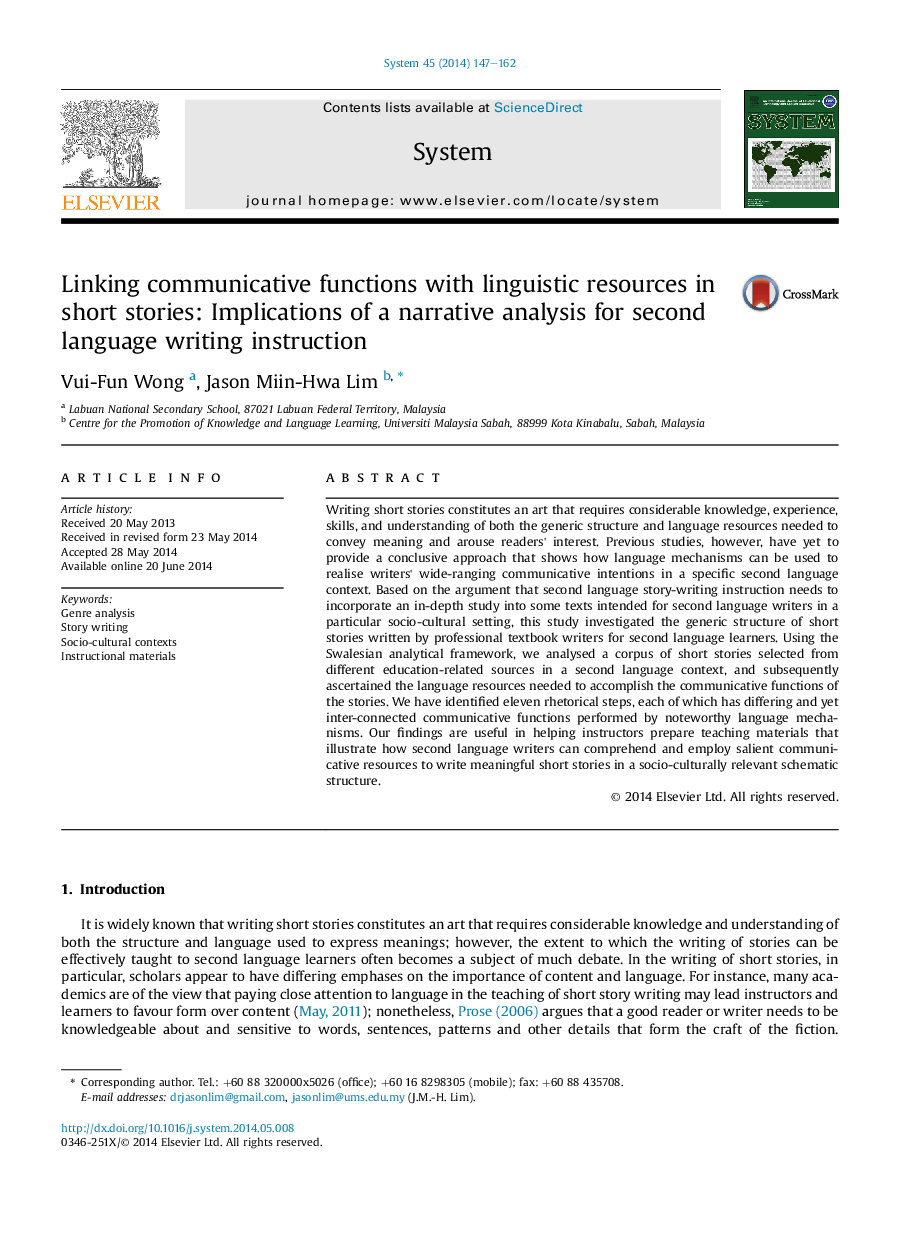| Article ID | Journal | Published Year | Pages | File Type |
|---|---|---|---|---|
| 373341 | System | 2014 | 16 Pages |
Writing short stories constitutes an art that requires considerable knowledge, experience, skills, and understanding of both the generic structure and language resources needed to convey meaning and arouse readers' interest. Previous studies, however, have yet to provide a conclusive approach that shows how language mechanisms can be used to realise writers' wide-ranging communicative intentions in a specific second language context. Based on the argument that second language story-writing instruction needs to incorporate an in-depth study into some texts intended for second language writers in a particular socio-cultural setting, this study investigated the generic structure of short stories written by professional textbook writers for second language learners. Using the Swalesian analytical framework, we analysed a corpus of short stories selected from different education-related sources in a second language context, and subsequently ascertained the language resources needed to accomplish the communicative functions of the stories. We have identified eleven rhetorical steps, each of which has differing and yet inter-connected communicative functions performed by noteworthy language mechanisms. Our findings are useful in helping instructors prepare teaching materials that illustrate how second language writers can comprehend and employ salient communicative resources to write meaningful short stories in a socio-culturally relevant schematic structure.
